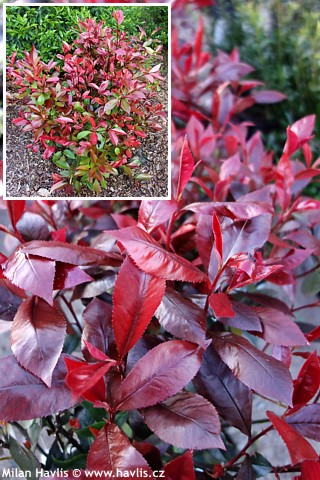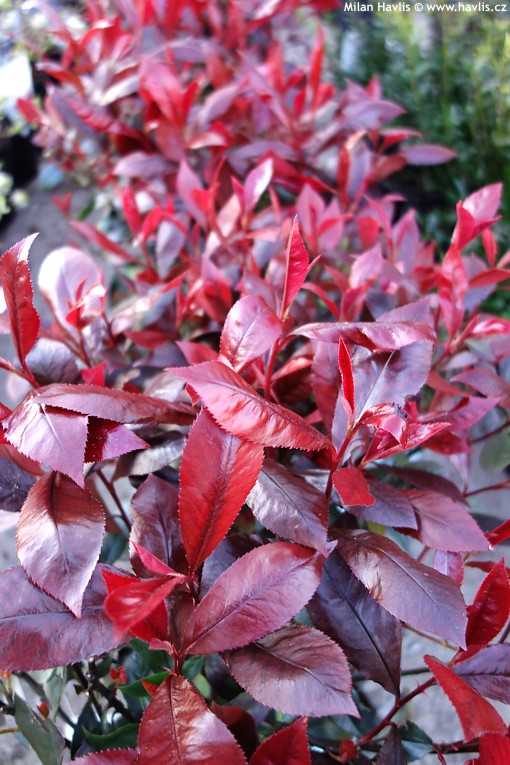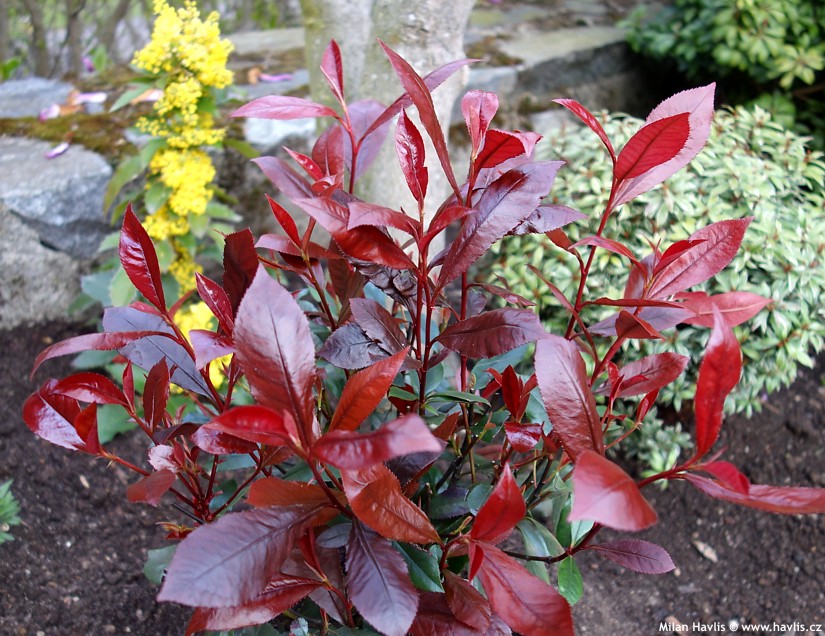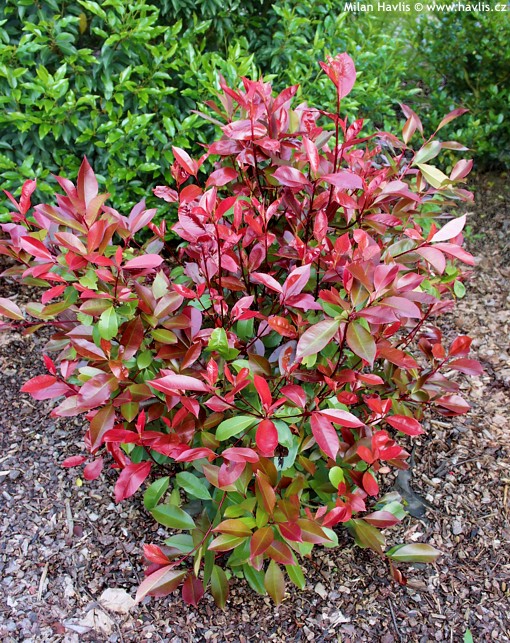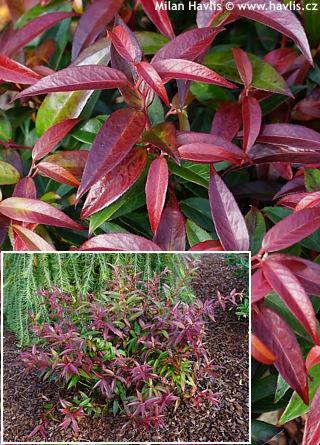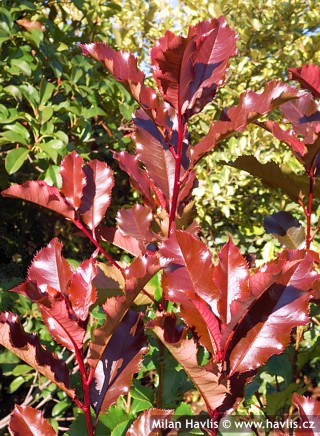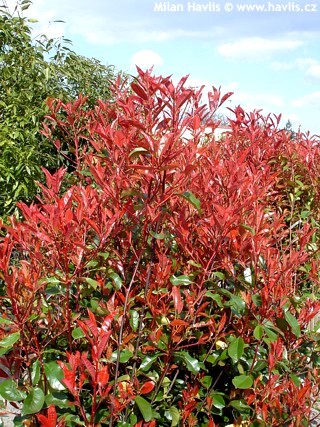Photinia x fraseri 'ROBUSTA COMPACTA' Fraser's photinia
Photinia
Fraser’s photinia is a popular shrub in countries and regions with milder winters. It is a hybrid between Japanese photinia glabra and Chinese photinia serratifolia. Red Robin was the first variety that came from this crossing, and after it proved huge commercial success, new selections have been introduced.
Robusta Compacta is another new selection of Fraser’s photinia from early 21st century. It exhibits a very compact and dense growth with dark wine red new leaves. It grows about half the size as opposed the famous Red Robin variety. The leaves are evergreen, broadly elliptic, glossy, and mature to dark green in summer. In mid spring medium-sized panicles of creamy white flowers are produced on older plants. Red coloured leaves emerge at least twice a year, sometimes three times if the season is warm and long. Pruning is not necessary in case of Compacta variety, yet it can be done an time from early spring until midsummer.
Photinia needs moist but well-drained, humus-rich soil and mulching. Provide extra watering in hot summers and mainly in frost-free periods in the winter if the ground is not frozen. Hardiness proved to -21°C and is expected to go even lower.
Last update 02-05-2016

































